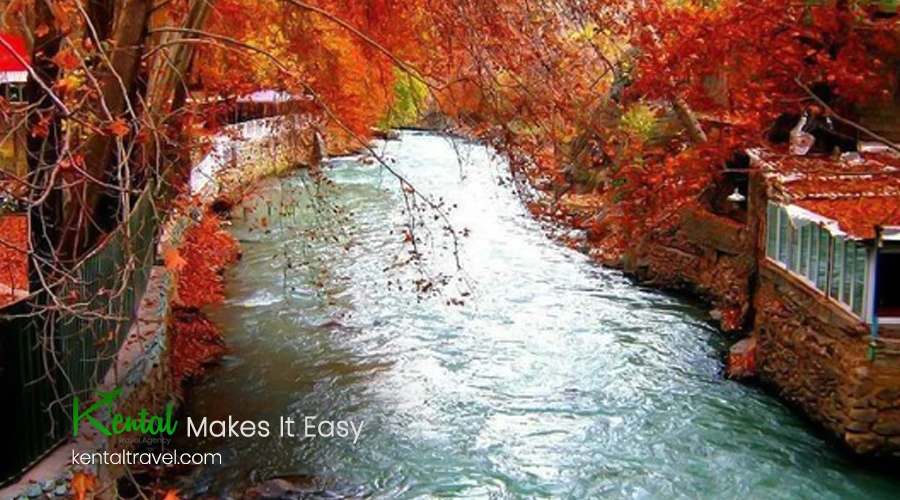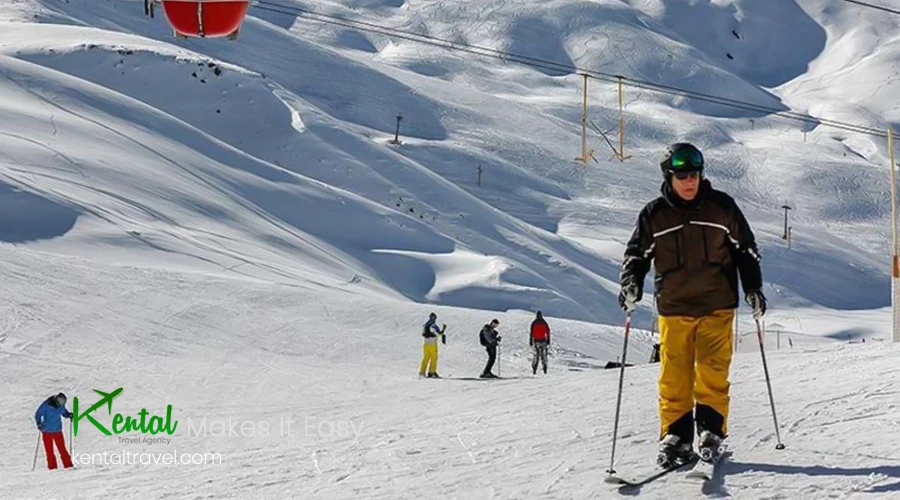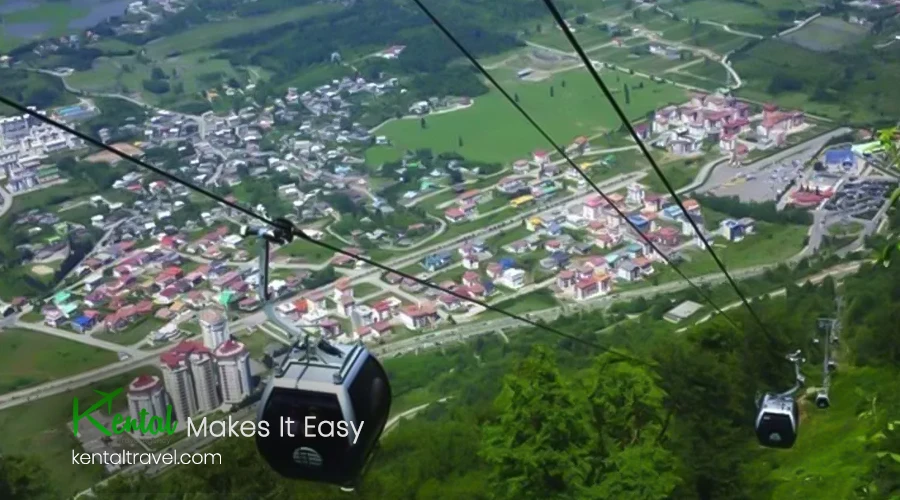Chalus Road in Iran: The Most Beautiful Road

Chalus Road in Iran is one of the most scenic routes in the country, connecting Tehran to the Caspian Sea with breathtaking landscapes and an unforgettable journey.The official name of this road is Route 59, and it’s one of the most important routes to access northern Iran. Chalus Road was opened in 1933 and gradually became known as one of the must-see places in Chalus. The construction of the Amir Kabir Dam drew even more attention to this road. Besides doubling the beauty of this road, the dam turned Chalus Road into a major tourist attraction. According to some, it’s not just one of the most beautiful roads in Iran but also one of the most beautiful in the world. To build this 160-kilometer road that winds through the Alborz mountain range, numerous long tunnels and bridges were constructed. This road was built during the reign of Reza Pahlavi, and all the tunnels and bridges were built with considerable difficulty and substantial pay for the workers. In this article, we’ll introduce you to this road, stay with us.
History of Chalus Road in Iran

From the Qajar era, all the country’s roads used to be pretty narrow. At one point, by the order of Naser al-Din Shah, both the Chalus Road and the Haraz Road were widened by an Austrian engineer named Gastigirkhan, so that they could have multiple horses side by side or use carriages and horses to travel on these roads at the same time. During World War I, the occupying forces in Iran had trouble with traffic and transporting armored vehicles and personnel. During the suppression of one of the uprisings, they were forced to build roads to get military equipment to the frontlines. So, during the Qajar dynasty, in Reza Khan’s time, road development continued as a potential measure against the Russians.
According to documents from the National Archives of Iran, in 1930 (Solar Hijri year 1309), the design, survey, and construction of this beautiful road began under the supervision of Alexander Chernetsky, a Russian engineer. To construct this road, many long tunnels and bridges were built, earning it the title of the fourth most beautiful road in the world. The construction of the Karaj Dam in 1961 (Solar Hijri year 1340) and the opening of several restaurants and accommodations along the route brought more vitality to this road, gradually transforming Chalus Road into a path of development.
See more: Iran Visa
Chalus Road: A Stunning Route Between Mountains and the Sea
✔ Route: This scenic road begins in Alborz Province and ends in Chalus, near the Caspian Sea.
✔ Landscape: It winds through the Alborz Mountains and the lush Hyrcanian forests, offering breathtaking views of rivers, waterfalls, and natural springs.
✔ History: Constructed in the 1930s during Reza Shah’s reign, it has become one of Iran’s most significant roads.
✔ Engineering Marvel: One of the first professionally designed roads to pass through the Alborz mountain range.
✔ Key Features:
▫ One of the busiest and most popular roads in Iran.
▫ A perfect blend of natural beauty and historical engineering.
▫ A must-visit route for road trip lovers and adventure seekers.
✔ Best Time to Visit:
▫ Many travelers recommend driving this road between June and November for the best experience.
▫ However, each season adds its own charm to the journey.
✔ Safety Tips:
▫ During winter, snowfall and icy conditions can make driving challenging.
▫ It’s advisable to check the weather forecast before planning your trip.
Attractions of Chalus Road
Here are the Attractions of Chalus road in Iran:
Foods
Restaurants along Chalus Road, situated on a winding and picturesque route, offer a diverse menu of beverages, Iranian, International, and seafood dishes for breakfast, lunch, and dinner to cater to travelers.
If you plan to journey along Chalus Road, don’t miss out on its unique and local dishes like Baghala Ghatogh, a delicious stew with beans and dill, Mirza Ghasemi, a tasty eggplant and tomato dish, and the flavorful kebabs skillfully marinated with local spices. Also, don’t forget to savor the local and fresh bread alongside your meal. Chalus Road provides an entirely immersive experience for all the senses, thanks to the combination of breathtaking landscapes and delectable cuisine.
Nature

The Chalus-Karaj route offers incredible views and landscapes and is one of the most popular routes leading to northern Iran. Each season, this road has its own unique beauty. Perhaps the best time to visit Chalus is in the spring when the trees are in full bloom, the river is flowing, and nature is in its prime.
In the fall, Chalus comes alive with trees displaying yellowed leaves, occasional rain showers, and slippery roads. The autumn scenery, with its golden, yellow, and red hues, adds a beautiful touch to this road. Traveling to Chalus in the fall isn’t too difficult, but you need to be cautious and keep an eye on the news to avoid sudden floods.
Karaj River

The Karaj River is a river in Central Alborz, northwestern Tehran, running parallel to the Chalus Road. After passing through the eastern outskirts of Karaj and meandering through the Karaj and Shahriar plains, it connects to Jajrood. The Karaj River has been under the protection of the Environmental Organization since 1967.
Its banks are lush and picturesque, and come autumn, it dons a splendid array of colors, making it a popular attraction in Alborz Province and a favorite spot for camping and hiking. If you follow the river’s path, you’ll come across the beautiful Karaj Dam and the small village of Varian.
Amir Kabir Dam
One of the events that contributed to the fame of Chalus Road is the construction of the Amir Kabir Dam or Karaj Dam in 1961. The water from this dam is used to supply drinking water to Tehran, the capital of Iran, and for irrigation in the Karaj agricultural lands. This dam is considered one of the most beautiful dams in Iran and provides recreational activities such as fishing, hiking, and picnicking for visitors. It serves as a natural center for raising rainbow and red-spotted rainbow trout. When the dam’s water levels are lower, it’s an excellent spot for fishing.
Additionally, the grandeur of the dam, the sparkling river, the colorful sky, and the breathtaking, pristine scenery offer an incredible backdrop for photography enthusiasts. The dam is perfect for spending time in nature with family and friends, and many people even set up tents in the area and spend the night by the delightful lake. Furthermore, a short boat trip on the dam’s lake allows you to explore the village of Varian on the other side of the lake.
Dizin

Due to its pleasant summer climate and winter temperatures dropping to -20 degrees Celsius (suitable for skiing), Dizin has transformed into a year-round tourist village in the Middle East. In Dizin, there are several famous peaks for mountain climbing, and you can enjoy exciting activities on the international ski slopes. Dizin is located 75 kilometers from Karaj and boasts four gondolas, two chairlifts, 23 ski slopes, and , a grass skiing slope. Additionally, you can find tennis and volleyball courts, children’s playgrounds, and horseback riding. You can reach Dizin from two routes: Shemshak and Chalus Road.
Kelardasht

Kelardasht is approximately 50 kilometers away from Chalus in Mazandaran Province. Getting to Klardasht from Chalus Road starts at Marzanabad and due to its lake, forests, pleasant climate, and natural landscapes, it has become a major tourist attraction in northern Iran. This region is one of the highlands in Mazandaran and comprises several charming villages closely connected to each other. The beautiful Mazichal forest at the beginning of Abbasabad Road, Azoo and Majol forests on both sides of the Kelardasht valley, the vast Abbasabad forest at the northwest end of Kelardasht, and the Akapel Waterfall in Roodbarak are among the other highlights of this dreamy village.
Chalus Road is one of the most breathtaking and memorable routes in Iran, attracting countless travelers every year. If you’re curious about what visitors have experienced on this scenic journey, check out their reviews on TripAdvisor.”
Kandovan Tunnel
Chalus Road connects Karaj to Chalus County and features several remarkable tunnels, but the Kandovan Tunnel on Chalus Road, the 11th and most famous tunnel, is attributed to the Pahlavi era. Due to its location in the mountains and the limited resources of that time, it took approximately three years to construct the Kandovan Tunnel. Before this tunnel was built, the road from Karaj to Chalus was impassable for about 5 months each year. The Kandovan Tunnel is 1,886 meters long, 5 to 7 meters wide, and has a height of 6 meters.
See more: Thing To Do In Iran
Hidden Lake
Location: Farakhin Lake, Veysar Village, Kojur District, Nowshahr City, Mazandaran Province
In the heart of Nowshahr, there is a paradise called “Farakhin,” which is one of the most pristine lakes in Iran because it’s hidden among lots of tall trees. To reach there, you need locals and tour leaders’ guidance. From Tehran, drive towards Chalus road, and after 7 km from Marzanabad, go to the Kojur branch; after the first 30 km, you’ll reach Dalasm and then Veysar. After Veysar, it’s a dirt road. You have to travel 15 km to Farakhin Lake.
Farakhin is excellent for swimming and boating. This place is untouched, so make sure to take care of the environment, don’t throw garbage ,and collect if you see any. The best time to travel to this beautiful lake is from late April to late September.
FAQs about Chalous Road Iran
- How long is Chalous Road?
Chalus road in Iran is 163 kilometers long, with a width of 8 meters, expanding to 10 to 12 meters in certain sections.
- Where is Chalus Road located?
Chalus Road, also known as Route 59, is a scenic highway in northern Iran. It connects Karaj to the coastal city of Chalus in Mazandaran Province.
💚 This article was crafted by the Kental Travel editorial team to provide valuable insights for travelers. For more in-depth guides and travel tips about Iran, visit the Kental Travel Blog
